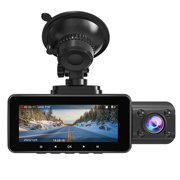The unpredictability of wildlife to drivers has been linked to the increase in the rate of animal-vehicle collision. Similarly, the expansion of highway networks and traffic are a major contributing factor to the rate of animal collision with a vehicle.
In Canada, wildlife collision is frequently becoming the main concern to road users. But, how can this problem be solved? How can the vehicle-animal collision be averted or the rate reduced? The answer to this question is the main point of discussion in this article.

Animal Collision Fast Facts You Need to Know
There are some facts about an animal collision you need to know as a driver. Some of these fast facts you need to know include:
- Approximately 80% of all wildlife collisions with vehicles involve deer. Elk, Moose, coyote, bears and other wildlife make up 20% .
- The peak dear hours range from sunset to midnight. Deer is also most popular on the road shortly before or after the sunrise. These peak periods are known as the highest risk times for animal collision with vehicle.
- There are some special deer crossing zones. These are mostly the areas where there is a boundary between forestland and agricultural fields.
- Most big animals such as deer seldom walk alone while crossing the road. This is the fact you should be aware of to avoid miscalculating your move while in animal populated zones.
- A wounded or frightened animal can hurt you. So, you should not come out of your vehicle or touch an animal your vehicle collided with to avoid getting hurt by the animal like deer and others.
How to Prevent Such Accidents, Especially at Night
- Watch out for signs of animal crossing the road
You should be mindful of yellow diamond-shaped sign known as the wildlife warning sign while driving in an animal populated area. Obedient to the wildlife warning signs will help to reduce or completely avoid the risk of animal collision. Make use of high-beam headlights when there is no oncoming traffic. This can help you spot wildlife sooner than usual.
- Use a night vision system
The Lanmodo Vast Pro night vision system uses NIR technology, can help you spot an animal on the roadway and others objects with ease even in low-light conditions. What's more, Lanmodo Vast Pro night vision system is able to provide 1080P, full-color image and with a night view distance up to 300M, so you can take measures timely if finding an animal far away.

- Ensure defensive driving
This is most important while driving on a roadway with a high moose or deer population. Avoid over speeding while moving in areas with high wildlife population. If you are overs speeding you will lose your ability to steer away from objects in the roadway, resulting an increase in animal collision and serious injury if such accident do happen.
What to Do If the Animal Is Already Before Your Car
The challenge of vehicle collision with animal is more when the animal is already before your car. At this point, you will need to take a quick decision and take action as quickly as possible to reduce the risk involved. Your ability to think out something helpful fast will be helpful in reducing the risk involved in colliding with the oncoming animal. Below are some of the things you should do when the animal is already before your car:
- Honk your horn to scare them away from the road. This is one precaution that can help to save the life of the animal and protect the car from severe damages. Honking the horn can either make the animal to stop or force them to run faster across the road.
- Brake quickly and firmly, then watch and steer your car to only strike the animal at a particular angle
- Release your leg on the brake before hitting the animal so the front of your vehicle can steer a bit up to avoid the animal colliding with your windshield
- Focus your car towards the direction the animal is coming from
- Try as much as possible to glance blow and avoid a head-on collision.

Does Insurance Cover Animal-Vehicle Collisions?
When a vehicle-wildlife collision occurs, the question about who will pay for damages on the vehicle always arise. Since it's not the driver's mistake, and the animal is not to be blamed either, the insurance company will be expected to pay for the repairs.
Normal collision insurance coverage only covers the collision between two vehicles and not between animal and vehicle. When you technically collide with an animal, the cost of repairs on your vehicle will be taken over by the comprehensive insurance coverage. Comprehensive coverage is equally known as other-than-collision (OTC) covers damages caused by Theft, vandalism, fire, water damage, animals and falling trees.



